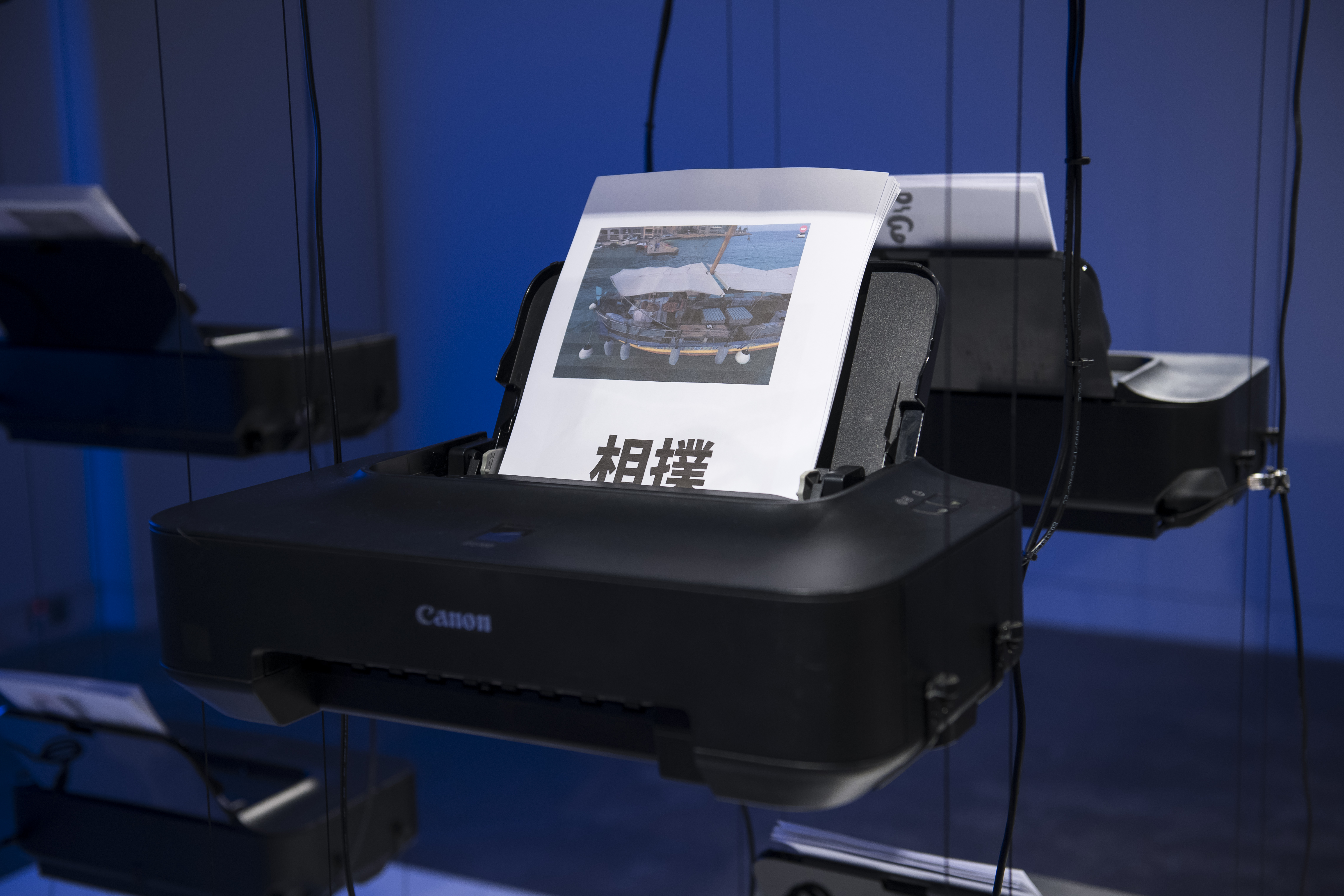-162°C, Doha




This project explores the economic connections that are driving the rapid growth of Qatar as it prepares for the world cup in 2022.
At -162°C natural gas becomes liquid, reducing in volume by a factor of over 600, the key innovation that makes it an economically viable trade commodity. LNG is Qatar’s main export, with Japan being its largest customer and a primary source of revenue for this small yet influential gulf nation. Although mostly economic, this exchange impacts the culture, lifestyle, and geopolitics of both countries.
This kinetic installation consists of an array of 40 printers suspended from the ceiling. The array is controlled by custom software that choreographs the printing of text and images extracted from the internet and synthesized into graphic compositions. The resulting performance ebbs and flows in varying intervals, exploring the constant exchange that feeds the economies of both Qatar and Japan.
At -162°C natural gas becomes liquid, reducing in volume by a factor of over 600, the key innovation that makes it an economically viable trade commodity. LNG is Qatar’s main export, with Japan being its largest customer and a primary source of revenue for this small yet influential gulf nation. Although mostly economic, this exchange impacts the culture, lifestyle, and geopolitics of both countries.
This kinetic installation consists of an array of 40 printers suspended from the ceiling. The array is controlled by custom software that choreographs the printing of text and images extracted from the internet and synthesized into graphic compositions. The resulting performance ebbs and flows in varying intervals, exploring the constant exchange that feeds the economies of both Qatar and Japan.
As this project explores ties between two countries, it was conceived as two exhibitions taking place in each nation's capital city, Tokyo and Doha. The installations occurred in sequence, 3 months apart, and took slightly different approaches (both formally and conceptually) to exploring the economic, social, and cultural implications of the energy trade between these distant neighbors.
The Doha exhibition was the result of a collaboration between faculty and students at VCUarts Qatar, Texas A&M University In Qatar, and Tokyo Metropolitan University’s AIIT. The work was made possible with support from the VCUarts Qatar/Qatar Foundation Faculty Research Grant program, The Advanced Institute of Industrial Technology at Tokyo Metropolitan University, Tasmeem Doha, the Qatar Museum Authority / Doha Fire Station, and Arakawa Tokyo.
The Doha exhibition was the result of a collaboration between faculty and students at VCUarts Qatar, Texas A&M University In Qatar, and Tokyo Metropolitan University’s AIIT. The work was made possible with support from the VCUarts Qatar/Qatar Foundation Faculty Research Grant program, The Advanced Institute of Industrial Technology at Tokyo Metropolitan University, Tasmeem Doha, the Qatar Museum Authority / Doha Fire Station, and Arakawa Tokyo.
Innella, Giovanni., Simone Muscolino, Levi Hammett, Michael Hersrud, Maryam Al Homaid, Nathan Davis, Hind Al Saad, Sarah Elawad, & Reham Ahmed. -162°C, Doha. (Installation of 40 printers outputting procedurally generated visual content). The Fire Station, Gallery 3. 14 - 25 March, 2019.
Special thanks to Geogre Paul, Adam Cath, and the Sophomore Graphic Design students at VCUarts Qatar.